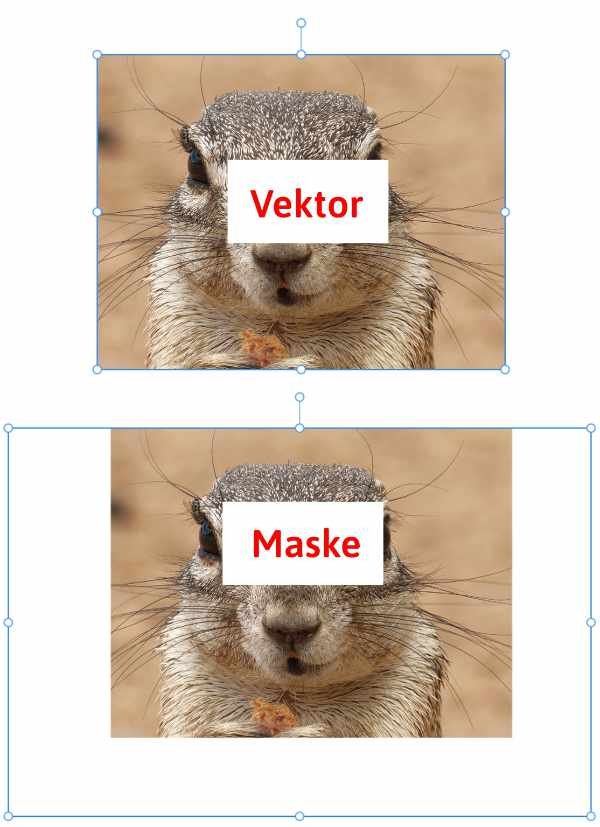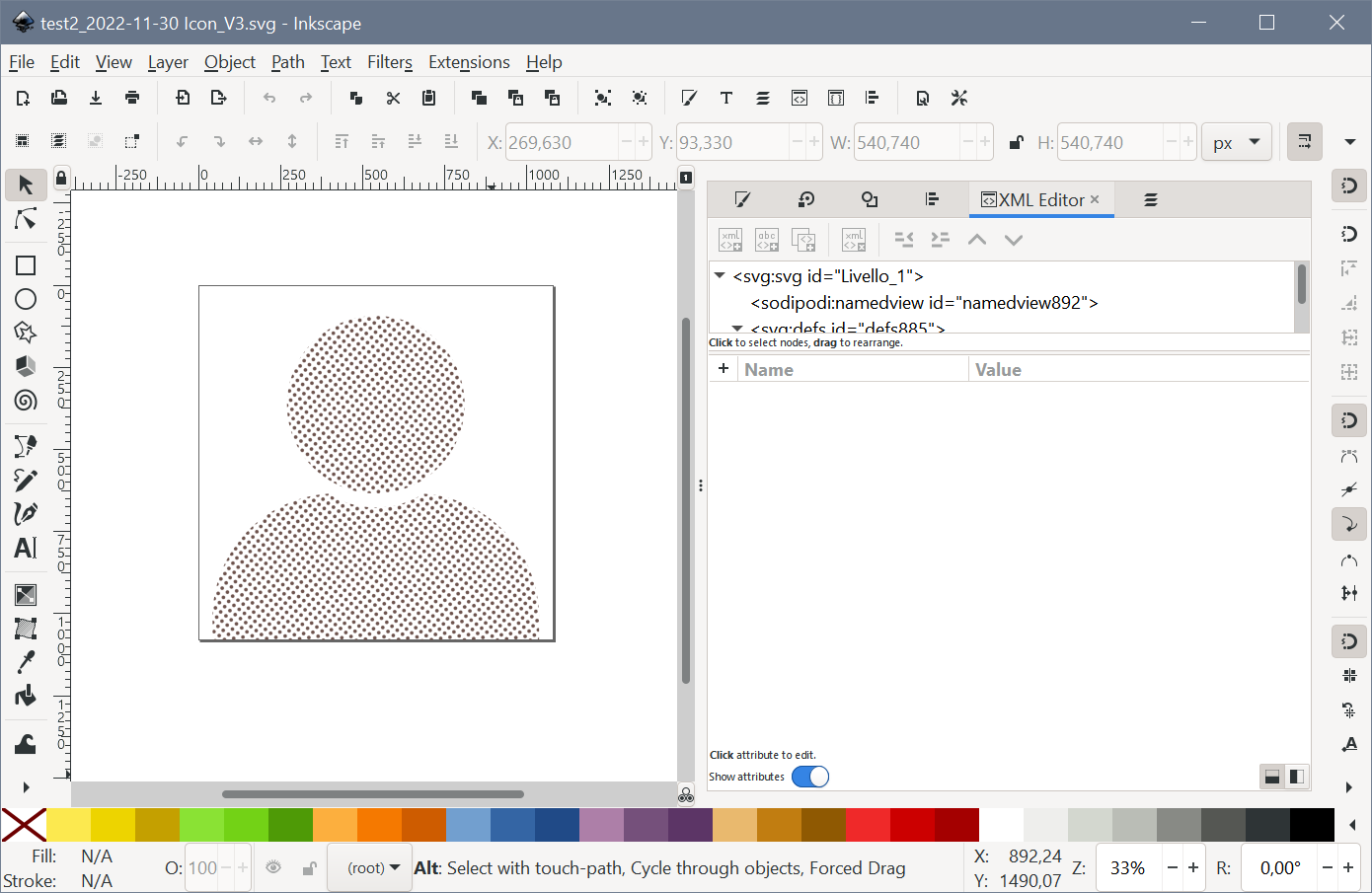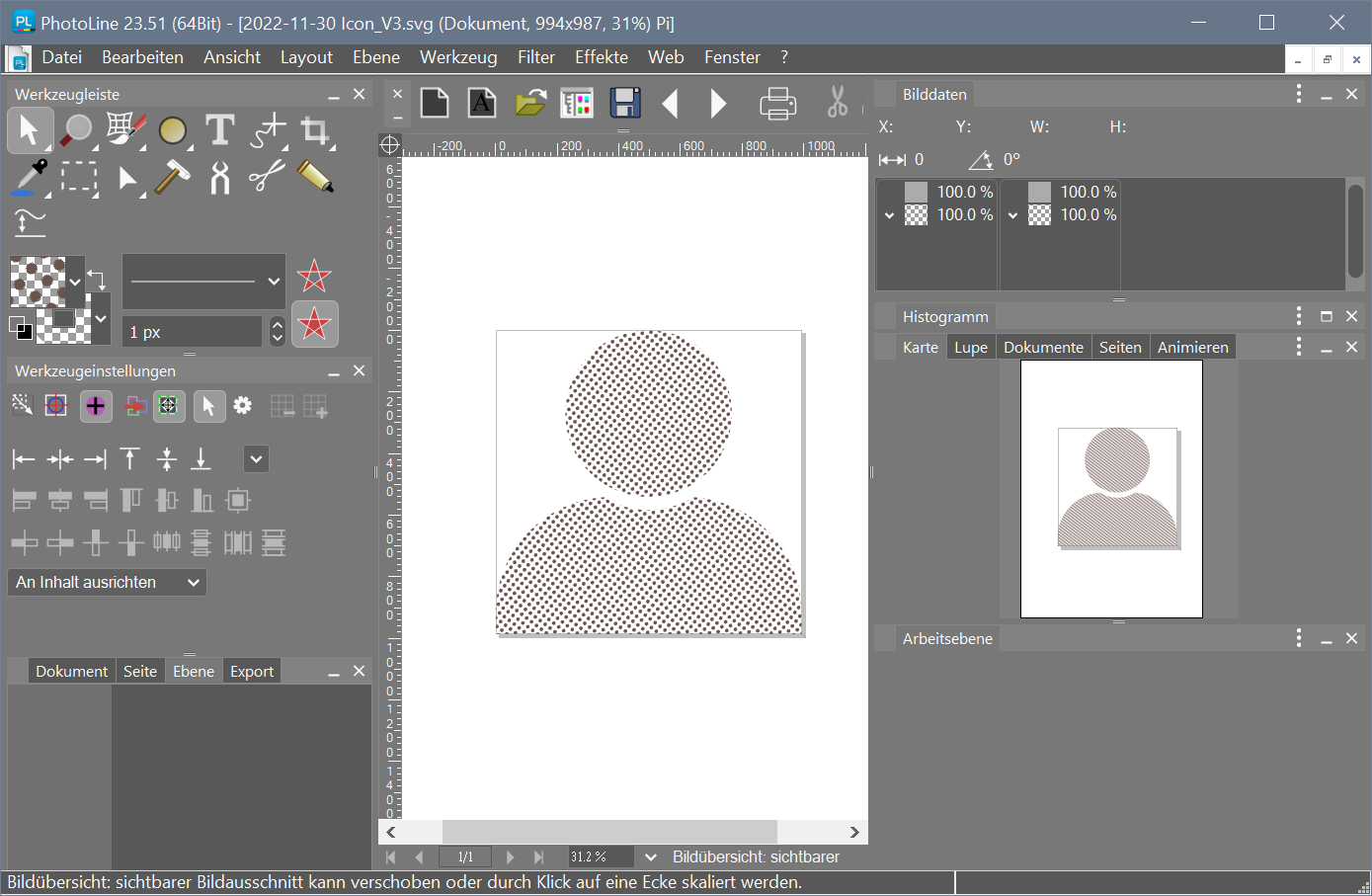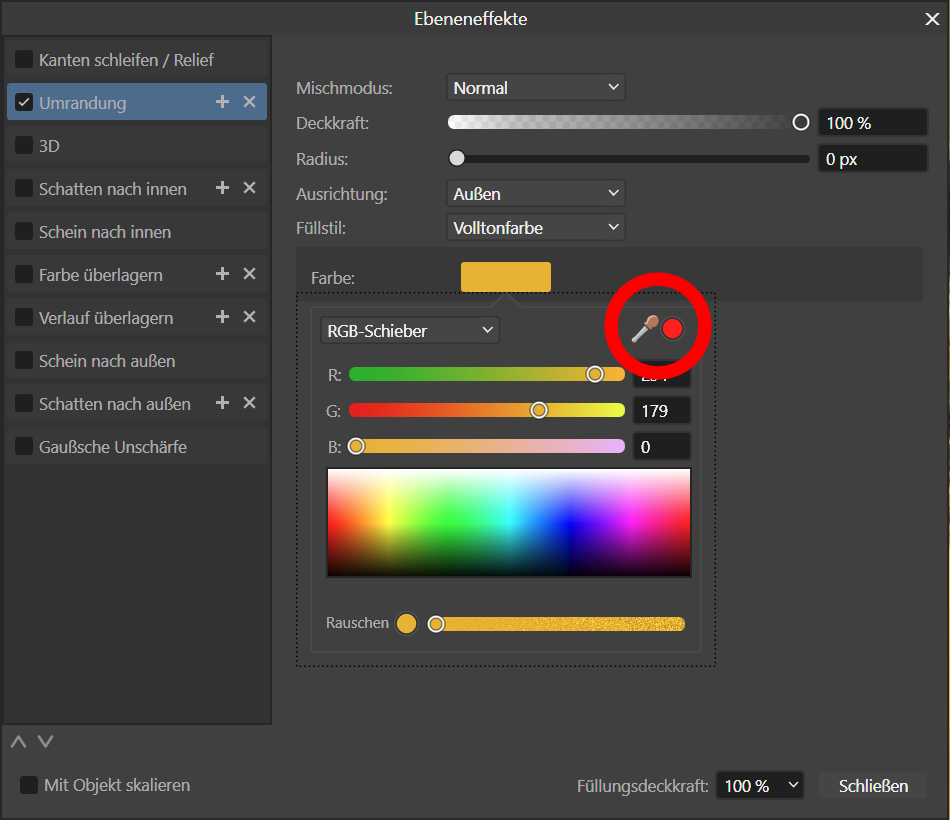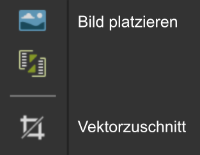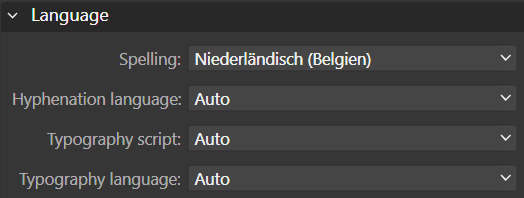
Arakel
Members-
Posts
36 -
Joined
-
Last visited
Everything posted by Arakel
-
Filling text with a pattern in Affinity Photo
Arakel replied to CaroleA's topic in Desktop Questions (macOS and Windows)
Hi CaroleA, you could use the Gradient Tool. On the context toolbar: Type: Bitmap. Is this what you are looking for? -
Hallo Frepo, das scheint wirklich ein Fehler zu sein, oder die Anzeige ist zwischen Windows und MAC unterschiedlich. Deine Beschnittebene ist eine Vektorebene. Wenn du in dem Kontextmenü den Punkt "Als Maske rastern" auswählst, solltest du eine wirkliche Maskenebene bekommen. Danach sollte der Auswahlrahmen die Originalgröße des Bildes anzeigen, wenn du das Bild auswählst. (Wie auf dem Bild meines letztes Posts zu sehen) Zu deinen Fragen: Auf zwei Windowsrechnern mit V1 und V2 bekomme ich ein Rechteck, es gibt also auf Win keinen Unterschied zwischen V1 und V2. Meine Versionen habe alle direkt bei Serif gekauft. Die Bezugsquelle sollte aber keinen Unterschied mache. Vermutlich kann ich aber ab hier nicht mehr weiterhelfen. Es wird am meisten Sinn machen, wenn du einen neuen Thread mit dem Tag "Publisher 2 Bugs found on macOS" startest und das Problem (bestenfalls in Englisch) schilderst. Viel Erfolg und viele Grüße
- 24 replies
-
- affinity publisher
- anschnittproblem
-
(and 1 more)
Tagged with:
-
Looking for Release Notes of Affinity Photo iPad Ver 1.10.6 ?
Arakel replied to augustya's topic in iPad Questions
Well, I'm sorry for that. It seems that others also search for more information. -
How do I “cut out” text to make a background show through?
Arakel replied to NashvilleNewman's topic in iPad Questions
StudioJason has allready showed a possible solution. A perhaps easier option would be to use the image with the grass as the fill for the text. This can be be done with the Gradient Tool -
This is strange, Serif Draw Plus X8 can do vector fills. (But opens this svg also with black fill) @pburki If you need a scalable version, please find it attached. 2022-11-30 Icon_V3.afdesign
-
Hallo frepo, ich glaub dir ja, und jetzt noch viel mehr 😉 Langsam bin ich ratlos, kann es sein, dass das ein Problem auf dem MAC ist? Es scheint mir fast so, als ob nur die Icon-Ansicht nicht korrekt ist. Am Ende des Videos klickst du auf die Bildebene und der Auswahlrahmen des Bildes hat die Größe des Beschnitts. Bei einer Maske würde der Rahmen über das Bild hinausgehen und die ursprüngliche Größe anzeigen, was ja auch das Problem bei der Beschnittwarnung verursachte. (siehe Bild) Du könntest auch einmal auf die Beschnitt-/Maskenebene mit der rechten Maustaste klicken. Wenn du dann den Menüpunkt "Als Maske rastern" findest, ist es eine Vektorebene. Falls du jedoch als Auswahl bekommst: "Maske bearbeiten", dann ist es eine Maske.
- 24 replies
-
- affinity publisher
- anschnittproblem
-
(and 1 more)
Tagged with:
-
It seems you don't believe me. 😏 I think the file is outside of the SVG standard, but if others can interpret the file correctly ...
-
Inkscape and PhotoLine does correctly. LibreOffice Draw showed the fill but with black as background.
-
As far as I understand, the file was generated by another application. It may even have been handwritten as source code. Open the file with a text editor, the <style> block is correct. The pattern as far as I understand it too. Maybe the "fill: url(...)" is outside of the SVG specification, I'm not that deep into the topic. All the programs I've opened the file with display it correctly, just not SVG See and Affinity. I guess Serif will take a look.
-
AP Umrandungsfarbe mit Pipette auswählen
Arakel replied to Herby49's topic in Desktop Questions (macOS and Windows)
Also ich habe alles Mögliche ausprobiert kann aber keinen Fehler bei der Pipette erkennen. Vielleicht habe ich auch das Problem noch nicht richtig verstanden. Bei mir geht es so, wie im Video zu sehen. 2022-12-01 20-08-12.mp4 -
AP Umrandungsfarbe mit Pipette auswählen
Arakel replied to Herby49's topic in Desktop Questions (macOS and Windows)
-
It seems to be a bug. The shape is there but not the fill. The fill is defined as a pattern and not applied to the shapes. All other tools and apps I use can display this file correctly except SVG See & Affinity. EDIT: by the way, Windows 10
-
Would it be possible to upload the orignal svg file?
-
Das finde ich jedoch auch komisch und vielleicht sollten wir das zuerst klären, bevor wir die weiteren Rätsel angehen. Wenn du ein Bild in Publisher einfügen willst, nutzt du das Werkzeug "Bild platzieren", wählst ein Bild aus und klickst in dein Dokument, um es einzufügen. Danach wählst du das Werkzeug "Vektorzuschnitt", um es auf die passende Größe zu beschneiden? Anstelle einer Vektorebene bekommst du dann an die Bildebene eine Maske? Würde bedeuten, dass die Vektorebene automatisch gerastert wird. Kann man das irgendwo einstellen?
- 24 replies
-
- affinity publisher
- anschnittproblem
-
(and 1 more)
Tagged with:
-
Photo v2 - layer fill with Ctrl/Alt + backspace
Arakel replied to Chita's topic in Desktop Questions (macOS and Windows)
Well, here are the shortcuts Photo V1: https://affinity.help/photo/en-US.lproj/index.html and here Photo V2: https://affinity.help/photo2/en-US.lproj/index.html At both Inpaint is Alt+Backspace -
Es hat mit der Maske zu tun, im Übrigen das gleiche auch in V1. Vektorbeschnitt geht ohne Probleme. Siehe im Bild die Ebenen, nur die oberste Ebene mit einer Maske macht Problem.
- 24 replies
-
- affinity publisher
- anschnittproblem
-
(and 1 more)
Tagged with:
-
Hallo frepo, Ich sehe gerade, das Bild hat eine Maske. Wenn ich mein Testbild maskiere und dann genau ungünstig positioniere, kann ich das Problem nachvollziehen. Ob man das jetzt als Bug bezeichnen soll weiß ich nicht so genau. Ich würde einen Bilderrahmen verwenden und das Bild damit beschneiden.
- 24 replies
-
- affinity publisher
- anschnittproblem
-
(and 1 more)
Tagged with:
-
Hallo frepo, bitte entschuldige meinen Beitrag, da waren bei mir die Finger ganz offensichtlich schneller als das Gehirn. 😒 Mir mag es so überhaupt nicht gelingen das Problem nachzustellen. Das Bild hast du eingefügt und in einen Bilderrahmen umgewandelt. Dieser Rahmen hat dann noch einen Effekt "Schatten außen". Oder ist das alles nicht nötig und du platzierst das Bild, und mit den eingestellten Werten für Anschnittproblem kommt sofort die Warnung. Wenn du das Bild verschiebst, geht dann die Warnung weg?
- 24 replies
-
- affinity publisher
- anschnittproblem
-
(and 1 more)
Tagged with:
-
Existing forum posts not found in search
Arakel replied to anweid's topic in Customer Service, Accounts and Purchasing
Walt would probably have responded before Anweid searched for his posts if it weren't for the time zone issue. 🤣 (In Germany it's time to go to bed, so: Good night!) -
Existing forum posts not found in search
Arakel replied to anweid's topic in Customer Service, Accounts and Purchasing
If you use the button "See my activity": anweid's Content (serif.com) Edit: If I hadn't checked the spelling, I would have been ahead of Alfred 😁 -
Anschnitt, Zuschnitt, Beschnittzugabe, Beschnitt, alles das Gleiche. Ich bin mir ziemlich sicher, dass das Problem das grüne Rechteck ist. Wenn dein Dokument gedruckt wird, dann soll das grüne Rechteck angeschnitten sein = genau am Rand stehen, ohne Blitzer (= ohne, dass nach dem Beschnitt etwas Weißes zu sehen ist) Im Druck können wir nicht genau bis zum Rand drucken, deshalb druck man etwas über den Rand hinaus und beschneidet es dann. (= Anschnitt, Zuschnitt, Beschnitt) Diese Beschnittzugabe fehlt aber bei deinem grünen Rechteck, deshalb meckert Publisher, zurecht! Schiebe das grüne Rechteck über den Rand hinaus und alles ist gut.
- 24 replies
-
- affinity publisher
- anschnittproblem
-
(and 1 more)
Tagged with:
-
How Do I get my money back?
Arakel replied to TJ Mead's topic in Customer Service, Accounts and Purchasing
affinityreturns@serif.com Like written here: Affinity Help & Support (serif.com) -
There is said for Windows: "....you will need to create a subfolder with its name in the format of xx_XX ( substituting xx_XX for the locale id ). " and for Mac: "Navigate to ~/Library/Spelling/ as above and create a subfolder with a name in the format of xx-XX ( substituting xx-XX for the locale id )." Funny thing, both variants (dash and underscore) work on Windows for me. Unfortunately I cannot reproduce your problem. Do you see the Dutch dictionary at Language? Is it then possible to assign the language to the paragraph?

